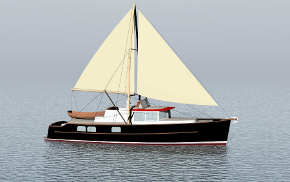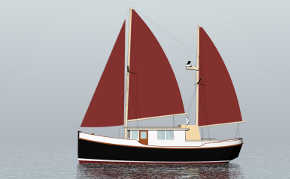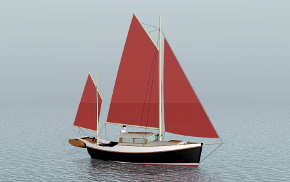The Hickman Sea Sled and Boston Whaler
The Hickman Sea Sled and the Boston Whaler
When Albert Hickman launched the first Sea Sled in about 1913, she was revolutionary. A lightweight box which flew across the top of the water using an (also revolutionary) surface piercing propeller. Compared to the narrow and heavy boats of the day, the “sled” was stunningly fast. To be sure the box shape and flattish bottom would pound itself to pieces in a sea, and it was not pretty, but speed made up for those shortcomings in many minds.
Hickman was to spend the rest of his life, until 1957, promoting his Sea Sled as the best form available for high speed in any conditions. But the boats never really quite made it to popularity, perhaps it was the look (that of a box), or perhaps it was the strident self-promotion by Hickman, most likely it was the ride and handling drawbacks of Sea Sleds themselves. There were numerous big contracts for various governments that just never came to pass.
In October of 1955 another big opportunity for Hickman was imminent. He reached a tentative agreement with the Fisher-Pierce Company to produce small outboard powerboats using their fiberglass encapsulated foam construction method. The boats were to be called Sea Sleds. But something went wrong between the parties and this project was abandoned. Fisher was friends with Ray Hunt and encouraged him to come up with something close they could build. Hunt was a researcher, he built a prototype box and they started modifying it. The central hull was added, and then got bigger. Hunt’s official story was that this was to “eliminate cavitation”. This heavily modified box became the plug for the Boston Whaler which was introduced in 1958. Hickman died in 1957.
The original Boston Whaler is heavy and hard riding, and somewhat un-controllable down wind in a sea. But no one could deny they are tough and stable at low angles of heel. Meanwhile hull forms by-passed the Sea Sled in favor of the prettier deep-vee, coincidentally also popularized by the designs of Ray Hunt. Today Boston Whaler retains a slight boxy nod to it’s Hickman ancestor, but utilizes the vee bottom for it’s planing surface.
Tad
-
External Links
- Sorry, no links have been posted



